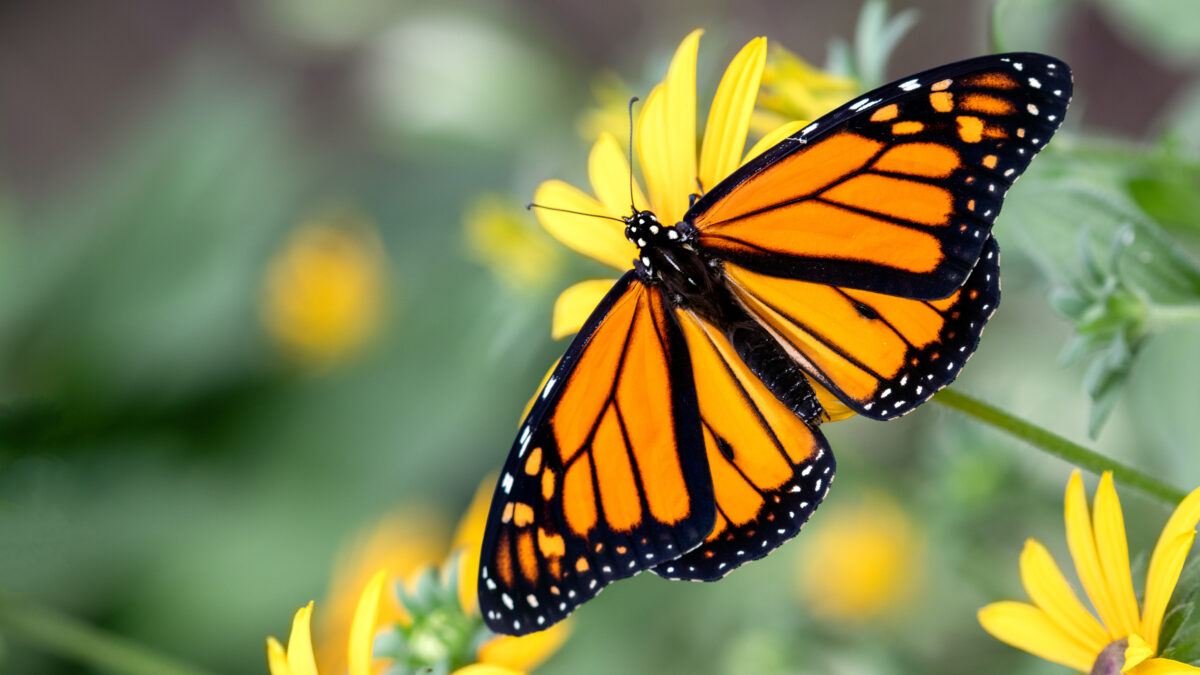Monarch Habitat Restoration Benefits Farmers and the Environment
TOPICS
Monarch ButterflyGuest Author
Special Contributor to FB.org

photo credit: Getty
Guest Author
Special Contributor to FB.org
By Robert Giblin
Looking like small, flying black, orange and yellow stained-glass windows, monarch butterflies are prized for their beauty, and as a symbol of biodiversity and the need to protect ecosystems. Due to a variety of challenges, however, monarch butterfly populations have declined. Collaboration among farmers, homeowners and other landowners will be crucial in helping to restore populations of monarchs and other pollinators.
There are many complex reasons for monarch population declines, including loss of breeding habitat, weather and climate change, predators, pathogens and parasites, and less overwintering habitat in Mexico.
Monarchs need places to eat, live and reproduce during their yearly journey from Mexico, to as far north as Canada. To survive the migration, they need two kinds of nourishment – nectar and milkweed. Monarchs consume nectar from a variety of flowers, while milkweed provides shelter for the butterflies’ eggs and nourishment for their caterpillars.
Collaboration among farmers, homeowners and other landowners will be crucial in helping to restore populations of monarchs and other pollinators.
Re-establishing milkweed is essential to restoring the population of monarchs, but it has long been considered a nuisance for farmers and gardeners alike. Milkweed can be devastating to crop yields and may be toxic to some livestock if ingested. Gardeners often treat the plant like an invasive species. For years, milkweed was classified as a noxious weed in some areas and its control was required by local or county laws.
In response to a 2014 petition to list the monarch under the Endangered Species Act, the Fish and Wildlife Service has begun the process of evaluating monarch conservation measures, including evaluating volunteer habitat conservation efforts in agriculture, to assess the impact toward ensuring long-term recovery and resilient monarch populations.
Farmers, ranchers and other landowners already are engaged in conservation initiatives focused on water quality, erosion control, wildlife and pollinator habitat. These efforts demonstrate that continuing innovation in agricultural practices can reduce environmental impacts, increase crop productivity and be compatible with monarch conservation efforts.
Farmers need to maintain good cropland, but they are in a great position to help restore monarch habitat. The time to act is now. Farmers and other land managers should begin establishing or expanding monarch habitat in the fall of 2017 and spring of 2018. Milkweed can be established in many niches on the agricultural landscape, including conservation lands, grazing lands, rights-of-way, field margins, and yard and garden areas. In some cases, solutions may be as simple as adjusting mowing or weed control practices to avoid time periods when monarch eggs and caterpillars are present.
Other land expanses, such as road and utility corridors or rights-of-way, also may be suitable for monarch habitat.
Many states and organizations offer information and volunteer registries for farmers and other landowners to enroll pollinator habitats and to share best management practices that will allow monarch habitat to survive. Along the monarch flyway, state wildlife agencies have been tasked to develop management plans that encourage conservation plans in ways that make sense locally or regionally. These state and local efforts should include input from farm organizations and agribusinesses, which are uniquely positioned to support management practices that will result in sustainable monarch populations.
Federal government agencies, such as the Agriculture Department, FWS and the National Resources Conservation Service also are cooperating to align programs and rules to foster monarch habitat restoration. The Farm Service Agency has enrolled more than 124,000 acres in the Conservation Reserve Program pollinator practice. FSA and NRCS are providing grants and incentives to implement practices to encourage establishment of pollinator habit.
Monarchs face many challenges on their long migratory journey. Agriculture can play a key role in helping these important pollinators reach their destination, but farmers can’t do it alone. Nor should they have to.
Robert Giblin is a freelance writer, speaker and consultant on agriculture and food issues and policies.
Top Issues
VIEW ALL